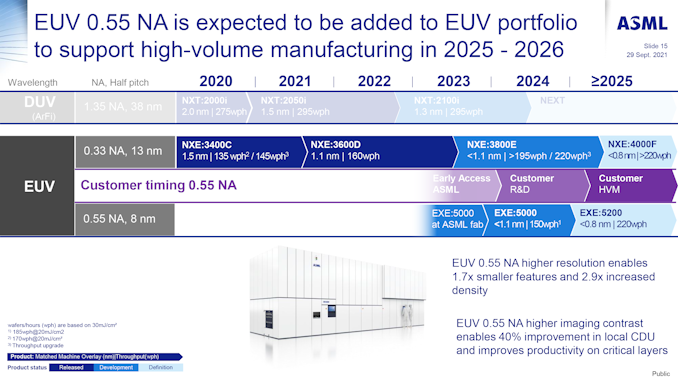Our avid readers tend to focus on microelectronics manufactured using leading-edge process technologies, which for Intel means using high numerical aperture extreme ultraviolet (EUV) lithography in a few years. But the vast majority of chips we will use in the next few years will be made using low numerical aperture EUV lithography tools. That’s why ASML’s latest announcement is particularly notable.
According to Computerbase, ASML this week delivered the first updated Twinscan NXE:3800E lithography machine for fab installation. The NXE:3800E is the latest version of the company’s line of 0.33 numerical aperture (low NA) lithography scanners designed to manufacture chips using 2-nanometer and 3-nanometer technology.
Chipmakers need speed! The first TWINSCAN NXE:3800E is now installed in a chip factory. 🔧
With its new wafer stage, the system will provide leading productivity for printing advanced chips. We are pushing lithography technology to new limits. 💪 pic.twitter.com/y5hJg5Tdot
— ASML (@ASMLcompany) March 12, 2024
ASML has yet to release full details of the machine’s capabilities, but the company’s previous roadmap indicated that the updated 3800E will offer higher wafer throughput and improved wafer alignment accuracy – what ASML calls “matching machine coverage” “. According to the roadmap, ASML expects to be able to crack 200 wafers per hour using its fifth-generation low numerical aperture EUV scanner, which would mark a major milestone for the technology as one of the shortcomings of EUV lithography from the outset. It’s its lower resolution. Higher throughput compared to today’s well-researched and tuned deep ultraviolet (DUV) machines.

For ASML’s logic and memory fab customers (there are only about a half-dozen companies total on the list right now), the updated scanners will help these foundries continue to improve and expand their production of cutting-edge chips. Even as major fabs are scaling up operations with additional facilities, increasing throughput at existing facilities remains an important factor in meeting capacity needs and reducing production costs (or at least controlling them).
While EUV scanners aren’t cheap—a typical scanner costs about $180 million, and the Twinscan NXE:3800E can cost even more—it will take some time to fully amortize these machines. At the same time, delivering a faster generation of EUV scanners will have a significant financial impact on ASML, which already enjoys the status (and criticism) that comes with being the sole supplier of such critical tools.
Following the 3800E, ASML developed at least one more generation of low numerical aperture EUV scanners and developed the Twinscan NXE:4000F. It is expected to be released around 2026.
source: ASML (via computer library)